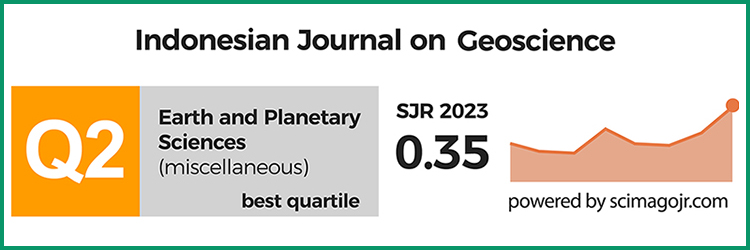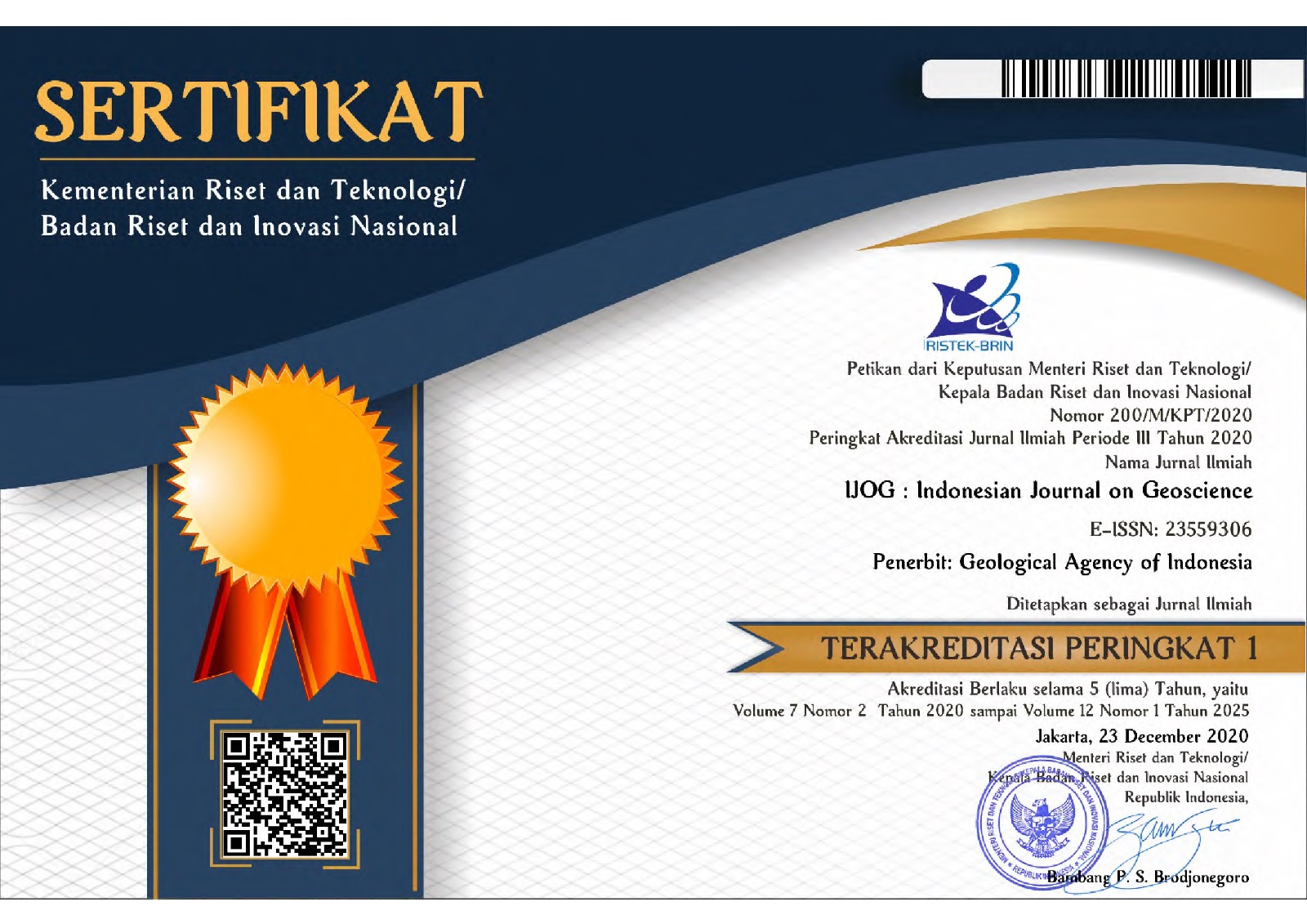The Resistivity Log and Its Role in Understanding Sediment Unloading in the Lower Kutai Basin, Indonesia
DOI:
https://doi.org/10.17014/ijog.10.3.379-392Abstract
High overpressure is a critical drilling issue in the Lower Kutai Basin. Typical pore pressure prediction approaches involve an empirical relationship, such as Eaton’s method using sonic log data. In areas with high geothermal gradients, such as the Lower Kutai Basin, there is evidence for additional overpressure from gas generation such that sediment unloading must be considered to interpret pore pressure correctly. In this paper a repeatable deterministic model is presented for pore pressure from sonic data and, using selected wells from the Lower Kutai Basin, also the use of the resistivity log in a similar model. In the Lower Kutai Basin, sonic logs are often absent from the logging suite or otherwise running over limited intervals, making an alternative log-based prediction method particularly valuable. As a caveat, shallow freshwater encroachment is reported in the Lower Kutai Basin, means the shallow resistivity data can be problematic to use to define both top of overpressure and a normal compaction trend. Care must therefore be taken if resistivity is to be used for the interpretation of unloaded pore pressure, and chiefly applied and this likely to be more successful where encroachment is less pronounced, such as pro-delta shales. Assuming the additional care needed in using resistivity data, this paper suggests that resistivity can be a useful tool for pore pressure prediction in unloaded shale at elevated temperatures within the Lower Kutai Basin. At present the technique has been applied to only a limited dataset due to data availability limitations, but it is hoped with further refinement it will form a helpful additional approach in the pore pressure prediction toolkit.
Keywords: pore pressure, resistivity, unloading, Lower Kutai Basin
Downloads
Published
Versions
- 23-11-2023 (2)
- 22-11-2023 (1)



















